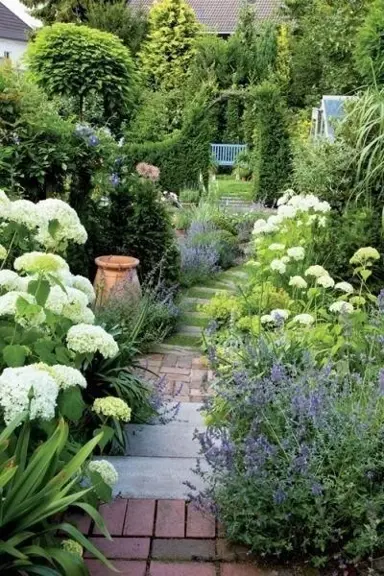
The Plant Company grows and sells thousands of Rubus plants throughout NZ. We pride ourselves on producing high quality plants and seeing the joy from our customers when they receive them. We do hope you enjoy them and support this NZ business that is passionate about Rubus plants.
Commonly known as Creeping Raspberry, this is a low-growing herbaceous perennial favoured for its foliage and form. It produces masses of richly...
Commonly known as Blackberry, this is a prickly climber that produces the familiar, black berries. It produces white flowers in spring which result...
“Clutha” is a variety of Raspberry that produces high yields of red fruit in summer. It is an almost thornless variety and the fruit are easily...
“Heritage” is a variety of Raspberry that produces high yields of dark red fruit through late summer and early autumn. The fruit are easily picked...
Commonly known as Mountain Lawyer, this is an evergreen creeper with thorny stems and leaves. It features long and narrow, green leaves that have...
Growing Blackberries in your garden delivers a vast range of benefits:
We’ll help you find the right variety of Raspberry, Blackberry, and many other berry options for your space. Our fruiting plants and trees have been selected to thrive in New Zealand’s climate. We stock only the highest quality plants, sourcing them from NZ’s leading nurseries. Each plant is packed and transported with extreme care, ensuring it arrives to you in the same condition it was in when it left the nursery. If you are wanting to buy berries, shop with confidence from the best in the industry.
1. What does Rubus look like?
The appearance of Rubus plants varies depending on the specific species, but they generally share some common characteristics. Here's a general overview of what Rubus plants typically look like:
Stems: Rubus plants typically have woody stems, often covered in sharp prickles or thorns. These stems can be either erect or arching, and they can grow quite long, sometimes reaching several meters in length.
Leaves: Rubus leaves are typically compound, meaning they are divided into multiple leaflets. The leaflets can be oval, elliptical, or lanceolate in shape, and they usually have serrated margins. The leaves can be either deciduous, falling off in the autumn, or evergreen, remaining green year-round.
Flowers: Rubus flowers are typically white or pink, and they have five petals. The flowers are arranged in clusters, either terminal or axillary, meaning they grow at the end of the stems or in the axils of the leaves.
Fruit: Rubus fruit is an aggregate of drupelets, meaning it is made up of many small, fleshy fruits. The drupelets are typically black, red, or purple in color, and they are juicy and sweet.
Here are some examples of specific Rubus species and their appearance:
2. Is Rubus a woody plant?
Rubus is a genus of woody plants in the rose family Rosaceae. Most Rubus species are shrubs or vines with prickly stems, leaves that are typically compound or simple, and many species produce edible fruits. The Rubus genus includes about 200 to 400 species, which are found worldwide in temperate regions.
3. What is the orange berry like a raspberry?
There are a few orange berries that resemble raspberries, but the most common one is the salmonberry (Rubus spectabilis). Salmonberries are native to North America and grow in damp forests and meadows. They are smaller than raspberries, but they have a similar flavour and texture. Salmonberries are a good source of vitamins C and E, and they are also high in fibre.
4. What is orange berry rubus pentalobus?
Rubus pentalobus, commonly known as orangeberry or Taiwanese creeping raspberry, is a low-growing evergreen shrub native to Taiwan. It belongs to the rose family (Rosaceae) and is closely related to raspberries and blackberries. Orangeberry is known for its striking foliage and attractive orange berries, which have a sweet and tangy flavor.
Characteristics of Rubus pentalobus:
5. What are the uses for Rubus pentalobus?
Uses for Rubus pentalobus include:
6. Is blackberry a Rubus?
Yes, blackberry is a Rubus. In fact, the genus Rubus includes a wide variety of species that produce edible fruits, including blackberries, raspberries, dewberries, and salmonberries. These fruits are typically aggregates of drupelets, meaning they are composed of many small, fleshy fruits fused together.
The term "blackberry" is often used to refer specifically to the Rubus fruticosus aggregate, which includes a large number of closely related species. These blackberries are typically black or deep purple when ripe, and they have a sweet and tart flavor. They are a popular fruit for eating fresh, using in pies and jams, and baking into desserts.
Other species in the Rubus genus that produce blackberries include:
So, while there are many different types of blackberries, they all belong to the Rubus genus.
7. What fruit is a cross between a blackberry and a red raspberry?
The most common cross between a blackberry and a red raspberry is the tayberry. It is a hybrid berry that was first developed in Scotland in the 1870s. Tayberries are typically deep red in color, with a flavor that is similar to a raspberry but with a hint of blackberry tartness. They are also larger and firmer than raspberries, making them ideal for baking and preserving.
Other less common hybrids between blackberries and red raspberries include:
These hybrid berries are all delicious and nutritious, and they offer a unique flavor profile that is a blend of their blackberry and raspberry parents.
Whether you need assistance finding the plant you’re looking for or you simply want to know more about who we are and what we do, we invite you to get in touch with us today. A member of The Plant Company team will get back in touch as soon as possible.


